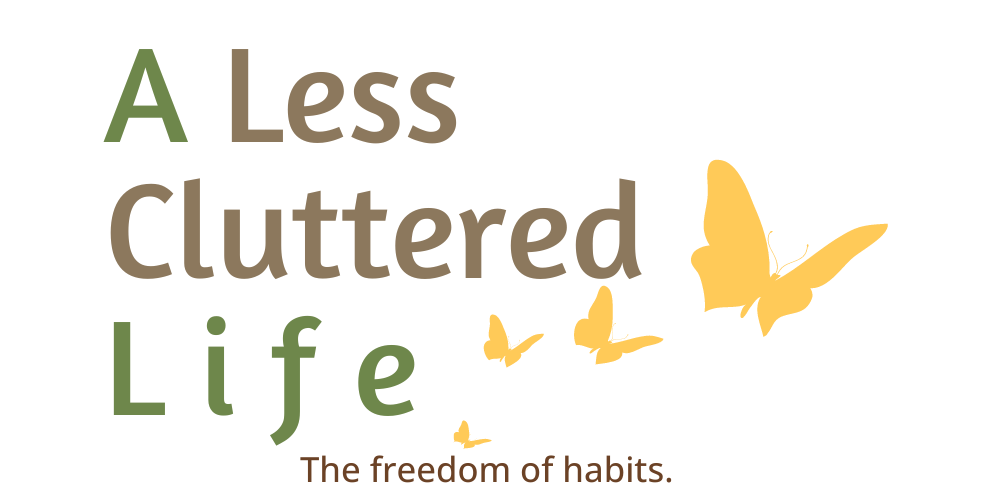|
by Susan McCarthy Are you frustrated by the number of times you’ve said, “This is the year I’m going to get organized!” only to never reach that goal? Learn how to set clear and realistic decluttering goals so you can see the results you desire. It’s easy to think that making the decision to declutter means that you’ll move forward and create your ideal space. And maybe, for a few days or weeks, your initial decision will motivate you. But then life comes up. Or you find that making decisions about individual items is more challenging than you expected. Ultimately, you find that you’re not meeting your decluttering goals and yet another season or year is passing by, and your home is far more cluttered than you want. So, how do you declutter and organize your home to see the results you want? The answer isn’t in the type of decluttering technique you use. Clarify What Organized Mean to YouIgnoring the dictionary definition of ‘organized’ for the moment, there is no one meaning for what organized looks like. Everyone owns different stuff, has a different configuration of rooms and furniture, and, perhaps most important, has a different tolerance for the abundance of items they feel comfortable having in a space. How much stuff you want in your home will differ from person to person. Which means that there is no rule that can tell you what to declutter from a room to make it look pretty, peaceful, and function in a practical way. Knowing what you want a room to contain, based on the activities done in that space, will help you understand what belongs … and doesn’t belong … in a room. Trying to declutter without knowing what you want to display and what activities you’ll do in the room can result in you holding onto a lot of items labeled “maybe” and “just in case” or even “someday.” Define Your Decluttering ObjectiveSo, before you start decluttering, understand your objective(s) for the space. This will help you declutter more effectively instead of working in a room but being disappointed or frustrated by the results. I find that writing down your vision, goal, or aspiration is more effective than simply thinking about it. It’s easy to think that you have a plan in your head until you try to act on it and find it lacking. When you put things in writing not only can you refer back to this, but the “I’ll figure it out when I get there” bits will stand out. You’ll be able to catch obstacles while writing that may have gotten glossed over while thinking about decluttering. Treat Yourself KindlyDecluttering is mentally, physically, and emotionally challenging work. It requires time that you need to take from other activities that you normally do. Just trying to decide where to start decluttering can leave you stuck. It’s easy during times like this to be harshly critical of yourself or to feel that the situation is hopeless. Instead, as difficult as this may be, treat yourself kindly. This could involve setting aside items to make a decision about them the next day. It could include giving yourself permission to declutter imperfectly. Maybe instead of locking yourself to a task for two or more hours, allow yourself to work on a small task for 15-to-30-minutes. Or to count decluttering a single item as “good enough” on some days. I hate pointing out that the stuff in your home didn’t accumulate all at once and it won’t get sorted through in a weekend or a week. However, it will go away faster than you acquired it. And, sometimes, you need help decluttering … even if it’s just talking to someone to get clear on what you’re trying to accomplish. Cope with Your Emotions while Making DecisionsIf you find yourself becoming very emotional while decluttering, first consider if there are less emotionally provocative objects you could declutter while honing your decluttering decision-making. Sentimental items are usually the last group of items that professional organizers suggest someone handle. But, of course, sentiment can be attached to any item. One person may find decluttering their linen closet a simple matter of keeping what gets used. But someone else may be facing the worn-out towels that were purchased as a wedding gift by their mother. Now those towels are a sentimental item. If you find yourself becoming somewhat emotional while handling an item, set the item down, close your eyes, and give your attention to the emotion. Don’t try to stop the emotion but also don’t fan the flames. When you feel the emotion pass, decide if you want to set this item aside for another day. However, if the emotions are overwhelming and anxiety provoking, turn from the emotion to your thoughts. Maybe talk out loud to yourself or someone who can just allow you to speak your piece. Or write down the thoughts you are having. Can you change the story to one that’s more positive and loving? Should your thoughts about the decluttering process leave you paralyzed, get up and take a walk or look out the window (or even watch a calming nature video on YouTube). Step away from decluttering until your thoughts calm. Consider if you are trying to force yourself to do too much too quickly or work for too many minutes or hours. If you have no deadline, cut your expectations in half. If that still proves to be too much, cut those expectations in half. You will build up your decluttering and decision-making “muscles” so know that the process won’t stay difficult throughout. Sometimes the work must be done quickly (emptying a parent’s home or because you need to make a sudden move) and even if you get the work done, you’ll likely experience a physical and mental backlash after the work is done. (You may end up ill. Plan for things that can make your life easier – a massage, meal delivery, a day off for yourself … and asking others for help, particularly when they offer assistance.) Plan Your Decluttering JourneyConsider what you are ready for. Do you want to jumpstart your decluttering journey or are you okay with taking your time? So that you can see the results of your efforts, stick with working in one room. If you find things that belong elsewhere, you can carry the items there and put them away. However, if you find yourself wanting to tidy this spot to put things away, stop yourself. Working here, there, and everywhere spreads the results of your efforts and has to be done with intention or you won’t notice anything getting done. Another often overlooked aspect of decluttering is the time it takes. If you think you’ll squeeze in decluttering into your already busy days, then it might not happen at all. Either schedule time to declutter or link it to other tasks. For example, while getting dressed in the morning, plan to declutter three items. Or, when cleaning up the kitchen for the evening, plan to declutter one shelf or drawer. If You Want to Meet Your Decluttering GoalsIt is possible to meet your goal to create your ideal space. Before you start,
While decluttering,
More Resources to Help You Achieve Your Decluttering Goals
0 Comments
Your comment will be posted after it is approved.
Leave a Reply. |
Categories
All
Hi, I'm SusanI'm a former teacher who became a professional organizer (and not because I'm a natural-born neatnik). I live with my husband and fluffy cat on a river in Massachusetts. I crochet, make handmade cards, and love reading young adult novels. Learn more about my decluttering journey here. |
|
Copyright 2024 Susan McCarthy - Susan@ALessClutteredLife.com -
Privacy Policies |
Proudly powered by Weebly

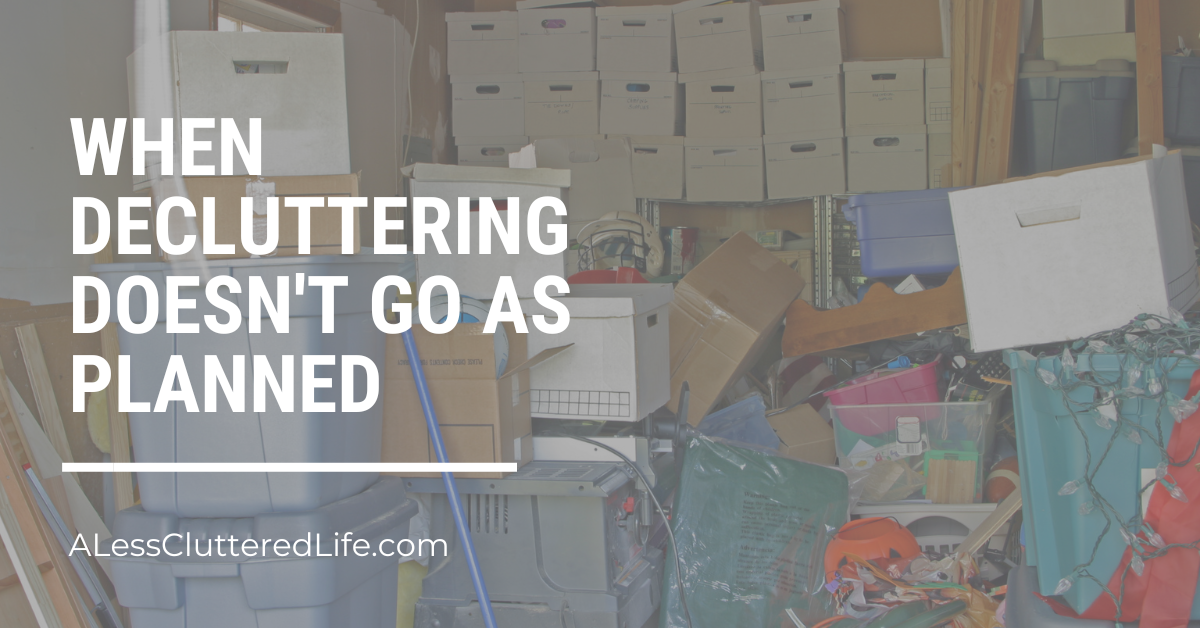
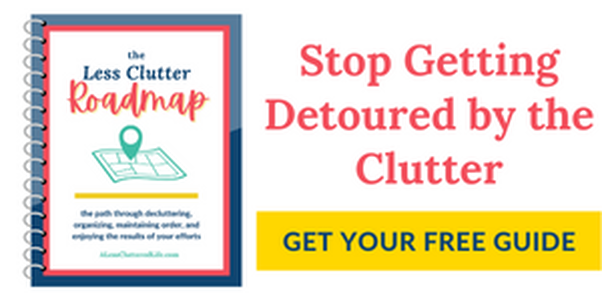
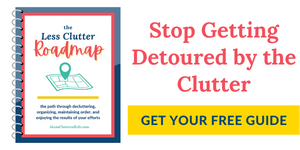

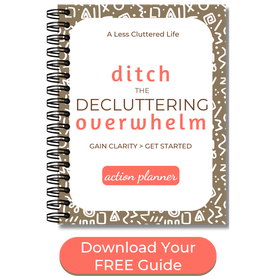

 RSS Feed
RSS Feed

